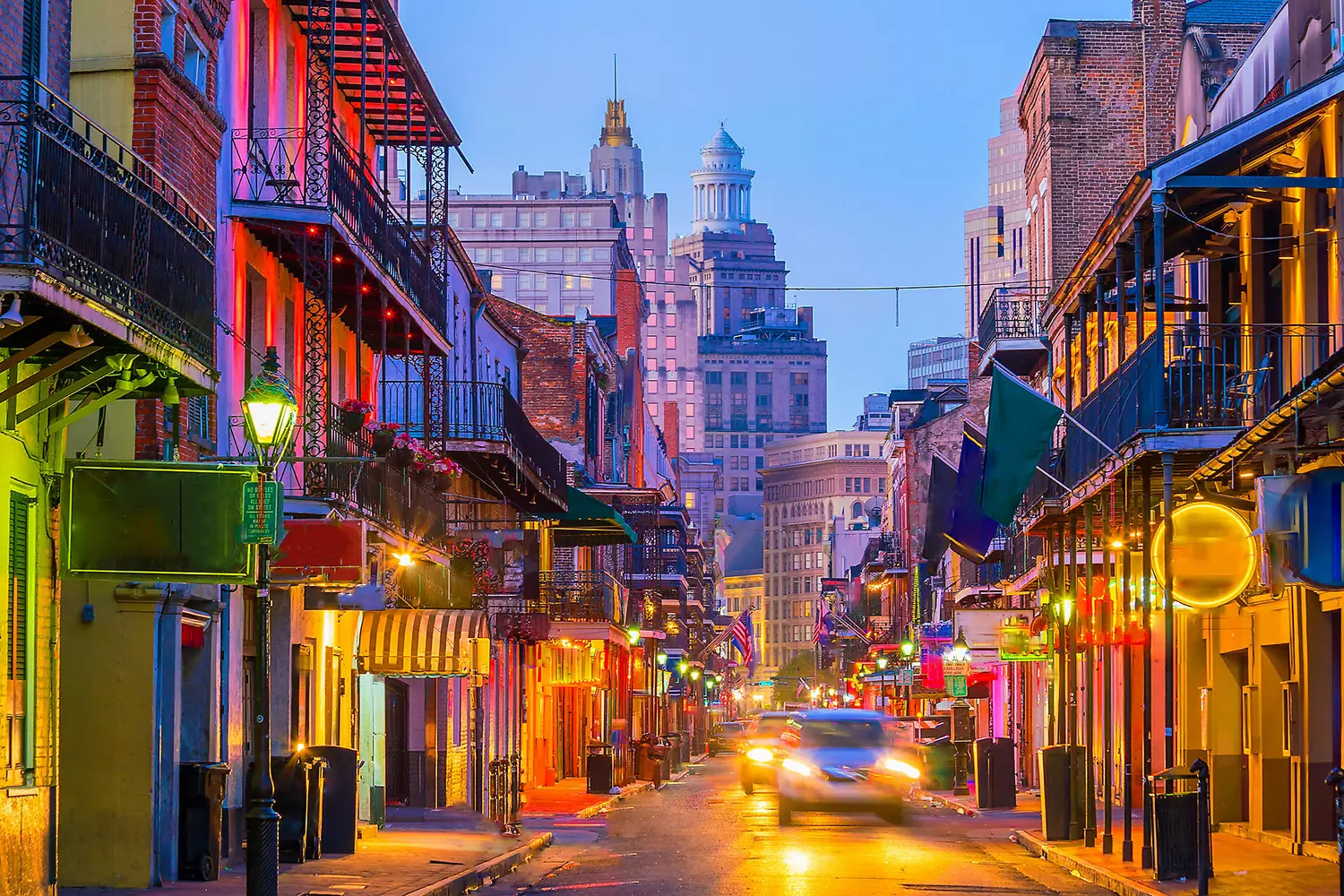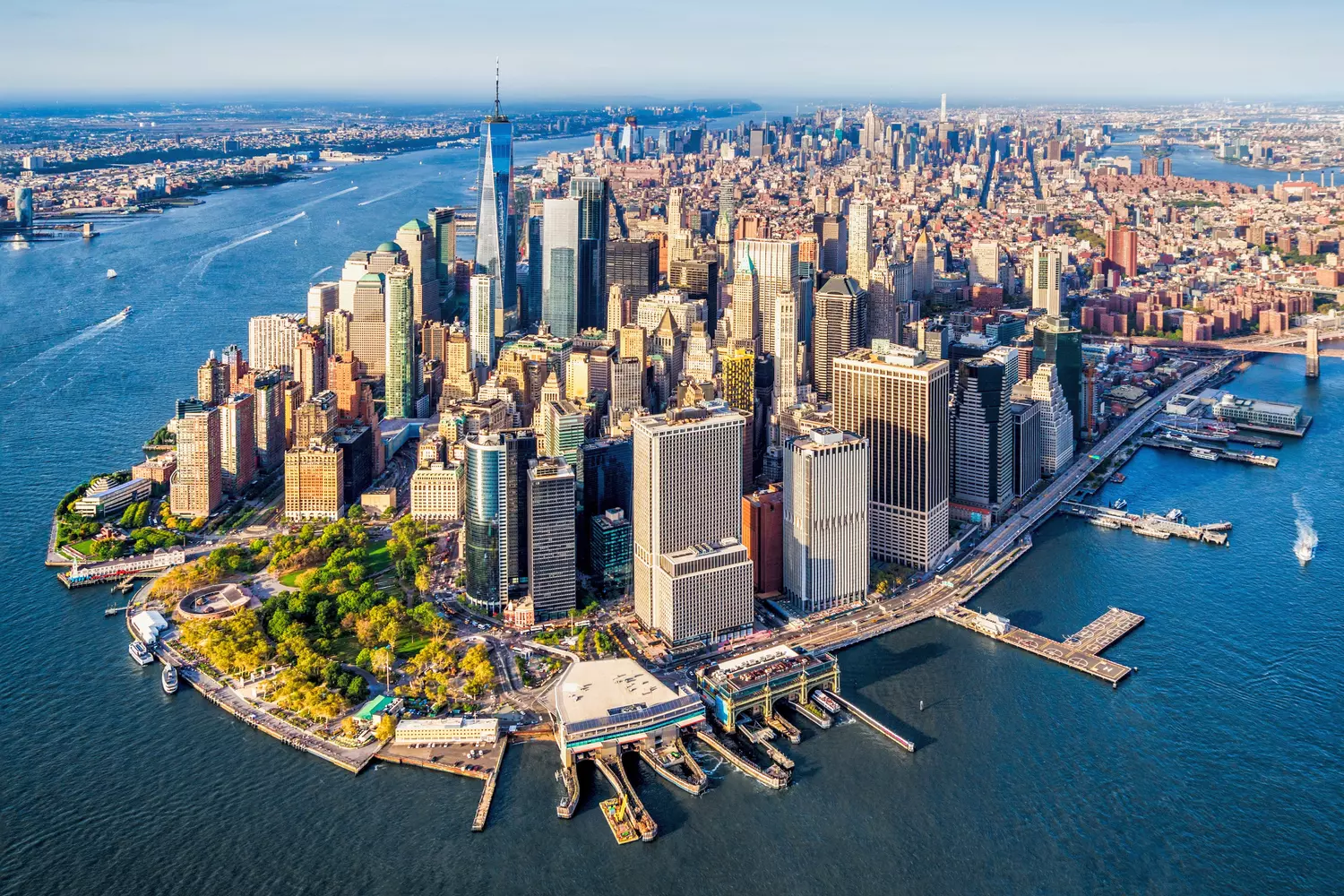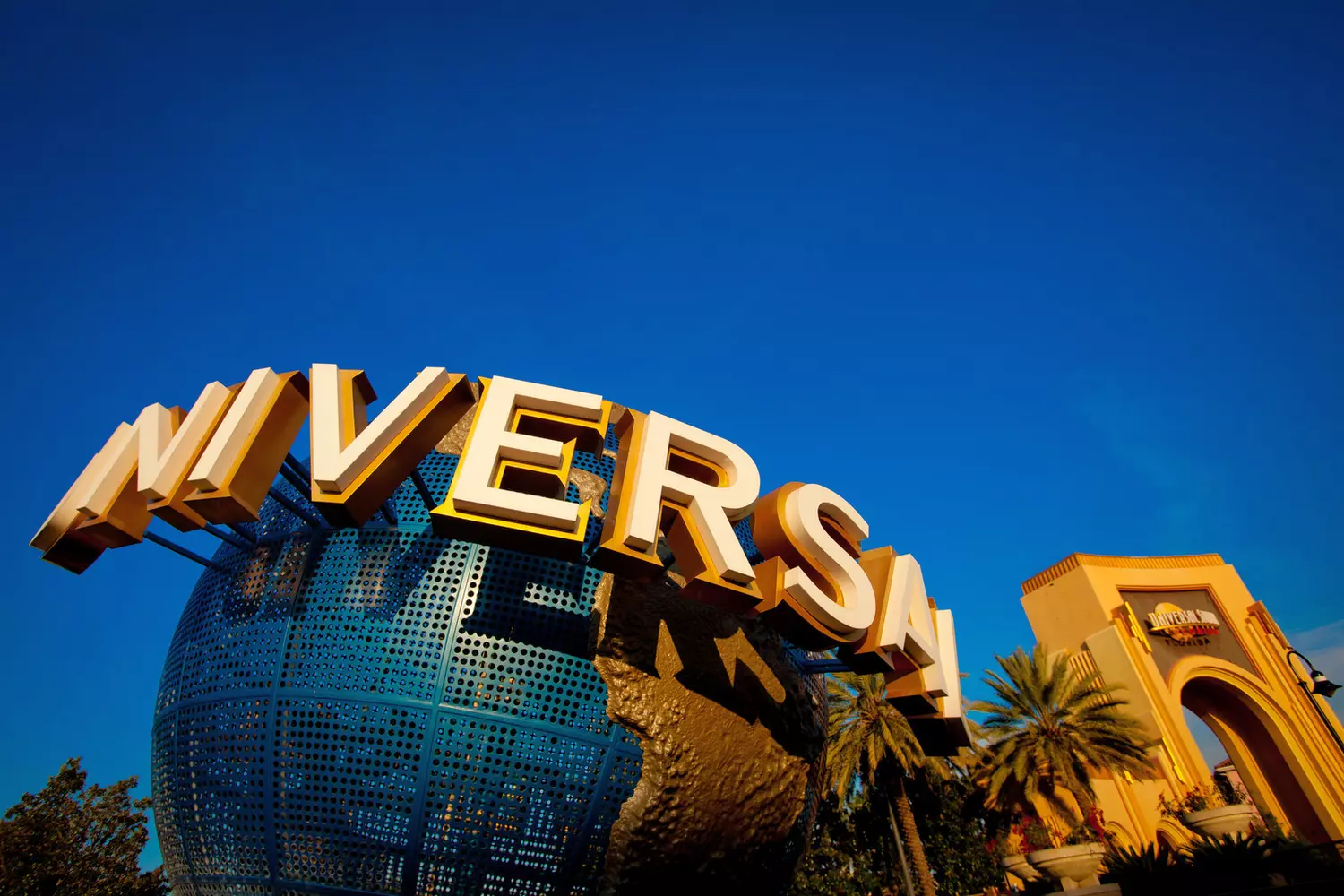The Cold War was more than just a historical term — it was an entire era in which the world lived on the edge. A game without rules between two superpowers — the United States and the Soviet Union. There were no open battles, but there was real fear that seeped into everyday life. There were no tanks in the streets of New York, but there were alarming news broadcasts, intercepted radio signals, school drills, and children’s dreams of falling bombs.
America, victorious in both World Wars, found itself in a new, invisible struggle — not for land, but for minds. It was a battle of ideals, of visions for the future, a fight to define the rules of the world. Democracy versus dictatorship. Capitalism versus a planned economy. Hollywood versus propaganda cinema. McDonald’s versus ration cards.
But this was not just a standoff between presidents, diplomats, and generals. It was a rivalry that entered every American home. People installed antennas to catch broadcasts from Voice of America and Radio Free Europe, chatted in diners about the latest news on the "Red Threat", and schoolchildren were taught to duck under desks — just in case of a nuclear strike. These were times when anxiety hid behind a cashier’s friendly smile or the next episode of a sitcom. Everything seemed normal, yet tension was in the air.
The United States became a different nation during this time. Paranoid — but mobilized. Fearful — but strong. A country that poured billions into defense and science, creating technologies that are now essential to our daily lives. The Cold War made America look to the skies with caution — and reach for the stars first.
Why is it important to talk about this today? Because many aspects of modern life — from global conflicts and sanctions to technological races and media manipulation — are not new. They were born in that time, when the world split into two camps and lived in fear of a single red button.
The Cold War didn’t end — it simply changed form. And to truly understand modern America, you need to follow its Cold War footprints. To remember how it all began, who acted and why — and what it led to.
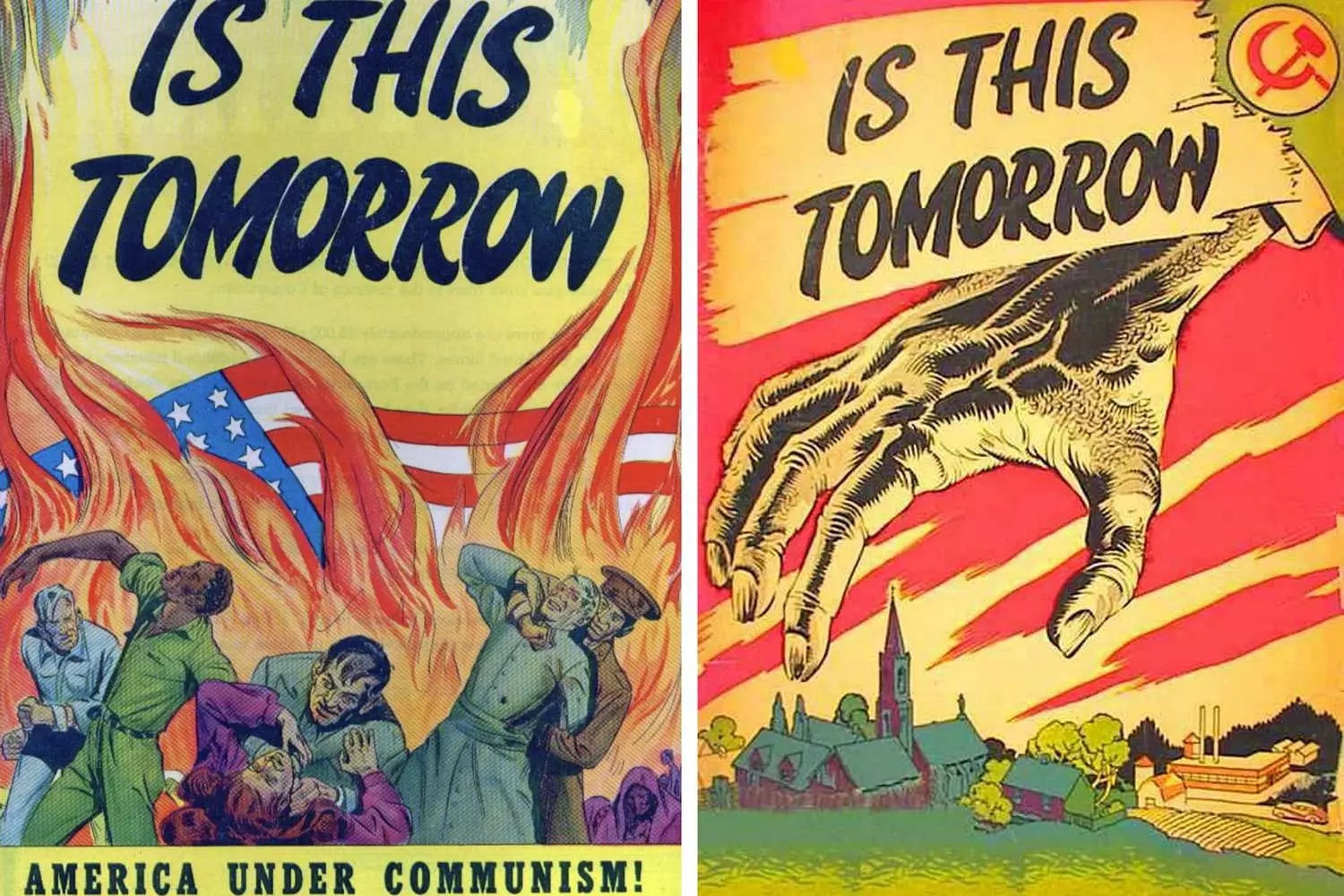
"If I had known that the Russians had six super bombs, I would have demanded that we have them too. But I don’t know what to do with them—except maybe smear Moscow." — Robert Oppenheimer (1950)
Когда союз превращается в соперника: как началась Холодная война
It seemed that only yesterday the United States and the Soviet Union stood shoulder to shoulder against Hitler. Americans were dropping humanitarian aid on liberated territories, Soviet tanks were storming Berlin, and at the Allied conferences in Yalta and Potsdam, leaders were shaking hands. The victory over Nazism united these vastly different nations. But the world barely had time to catch its breath before relations between the two powers began to deteriorate rapidly. Why?
- 01. A Postwar World: Two Visions of the Future
The war had ended — but fear had not. Europe lay in ruins, its economy devastated, borders blurred, governments unstable. Who would restore order? Who would lead the continent — and the world — forward?
This was where the fundamental conflict began: two opposing visions for what the postwar world should look like.
- The United States promoted free markets, a multiparty system, individual freedoms, and international trade.
- The Soviet Union, having endured immense losses and believing in its own messianic mission, sought to expand the socialist bloc, impose strict state control, and export its revolutionary ideology.
Both sides wanted stability — but imagined it differently. Which meant they could not allow the other to dominate.
- 02. Ideology as a Powder Keg
Communism and capitalism didn’t just differ in economic theory — they denied the very legitimacy of one another. One promised a society of equality, the other — one of prosperity. One appealed to justice, the other to freedom. Compromise seemed impossible: if one prevailed, the other would have to concede.
“We cannot accept that one system will devour the other,” declared George Kennan, the American diplomat and one of the architects of the containment policy. - 03. Spheres of Influence: Who Gets Europe?
While the U.S. supported the rebuilding of Western Europe and cooperation with Britain, France, and Germany, the USSR steadily tightened its grip on Eastern Bloc countries: Poland, Czechoslovakia, Romania, Bulgaria, Hungary, East Germany — all became satellites of Moscow. These weren’t merely “friendly states,” but buffer zones meant to protect the USSR from future aggression.
The United States saw this as expansionism. The USSR saw it as a strategic necessity. Every step deepened the mistrust. - 04. Atomic Anxiety: The Shadow of Hiroshima
When the U.S. dropped atomic bombs on Hiroshima and Nagasaki in August 1945, the world realized a new era had begun. And the Soviet Union realized it lacked the ultimate trump card.
Just four years later, in 1949, the USSR conducted its first successful nuclear bomb test. This marked the start of the nuclear arms race, which would keep the world on edge for decades. From that point on, U.S.–USSR dialogue resembled a chess match played over a live grenade.
Fun fact: American intelligence was so confident that the USSR couldn’t develop nuclear weapons quickly that the 1949 test came as a complete shock. Strategic plans had to be rewritten from scratch. - 05. And Finally — Fear. On Both Sides
America feared communist infiltration and internal subversion. The USSR feared encirclement, intervention, sabotage. And the more each side feared — the more they armed themselves, built alliances, tightened controls, planted spies.
“They fear us just as we fear them,” said Senator Arthur Vandenberg in 1947. And in those words lay the essence of the moment: mutual fear became the new normal.
The Cold War didn’t start with gunfire — but with suspicion, contradictions, and irreconcilable ambitions. Two giants, two ideological poles, two worlds — and one planet. That’s where it all began.
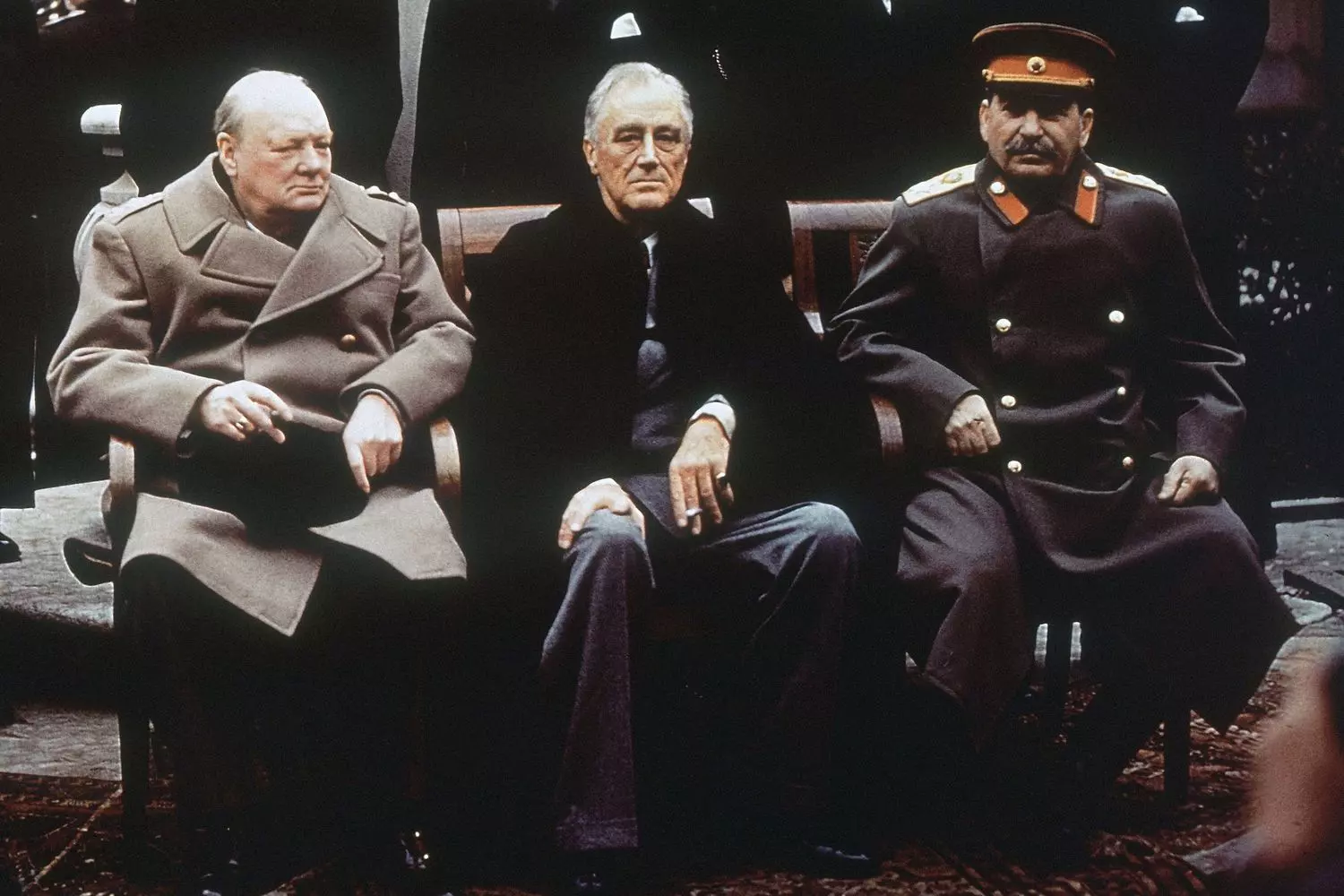
Money vs. Ideology: How America Stopped the Red Wave
When Harry Truman addressed the U.S. Congress in 1947, his speech sounded almost like a wartime declaration. But the enemy had no guns or tanks — it came armed with ideology and influence. It wasn’t advancing on battlefronts but infiltrating governments, parliaments, and people’s minds. That enemy was communism — and America had decided to stop it at any cost.
The Truman Doctrine: Peacetime Confrontation
The core of the Truman Doctrine was crystal clear: the United States would support any nation under threat of communist control — whether through direct aggression or internal rebellion, as was already happening in Greece and Turkey.
“It must be the policy of the United States to support free peoples who are resisting attempted subjugation by armed minorities or by outside pressures,” Truman declared in March 1947.
This marked the beginning of a new era in American foreign policy — the era of global intervention to contain the USSR. America was no longer neutral; it became the guarantor of freedom — at least, the version of freedom it understood. What did that look like in practice?
- Financial aid to unstable countries,
- Support for anti-communist regimes,
- Creation of intelligence networks, alliances, and political influence.
The U.S. began actively forming coalitions, strengthening NATO, and expanding its diplomatic presence around the world.
The Marshall Plan: Economics as a Weapon
Soon after the Truman Doctrine came another powerful instrument of influence — the Marshall Plan. Its architect was Secretary of State George Marshall, a World War II veteran who understood deeply that chaos is fertile ground for dictatorships.
The essence of the plan: the U.S. would provide war-torn Europe with $13 billion (over $150 billion in today’s money) to rebuild its economy, infrastructure, and social systems.
But this wasn’t mere generosity. The plan had a clear geopolitical aim: to prevent the spread of communism in Western Europe, especially in vulnerable countries like France, Italy, Belgium, Austria, and Germany.
Fun fact: The USSR and its allies were also invited to participate in the Marshall Plan — but Stalin saw it as a form of interference and forbade Eastern Bloc countries from accepting aid.
Results: Economy vs. Revolver
- By the early 1950s, Western Europe’s economy had not only recovered — it entered a phase of robust growth.
- Markets were revived, production increased, infrastructure was modernized.
- The U.S. strengthened not just economic ties, but secured lasting political and military alliances.
America realized that you could win hearts not just with weapons — but with dollars. The Marshall Plan became undeniable proof that economics is a form of geopolitics. Where there’s bread and jobs, there’s no room for revolutionary slogans.
The Truman Doctrine and the Marshall Plan were the first major steps in America’s global Cold War strategy. Instead of tanks — loans. Instead of occupation — investments. But the goal remained the same: not to let the Soviet Union advance a single step further.
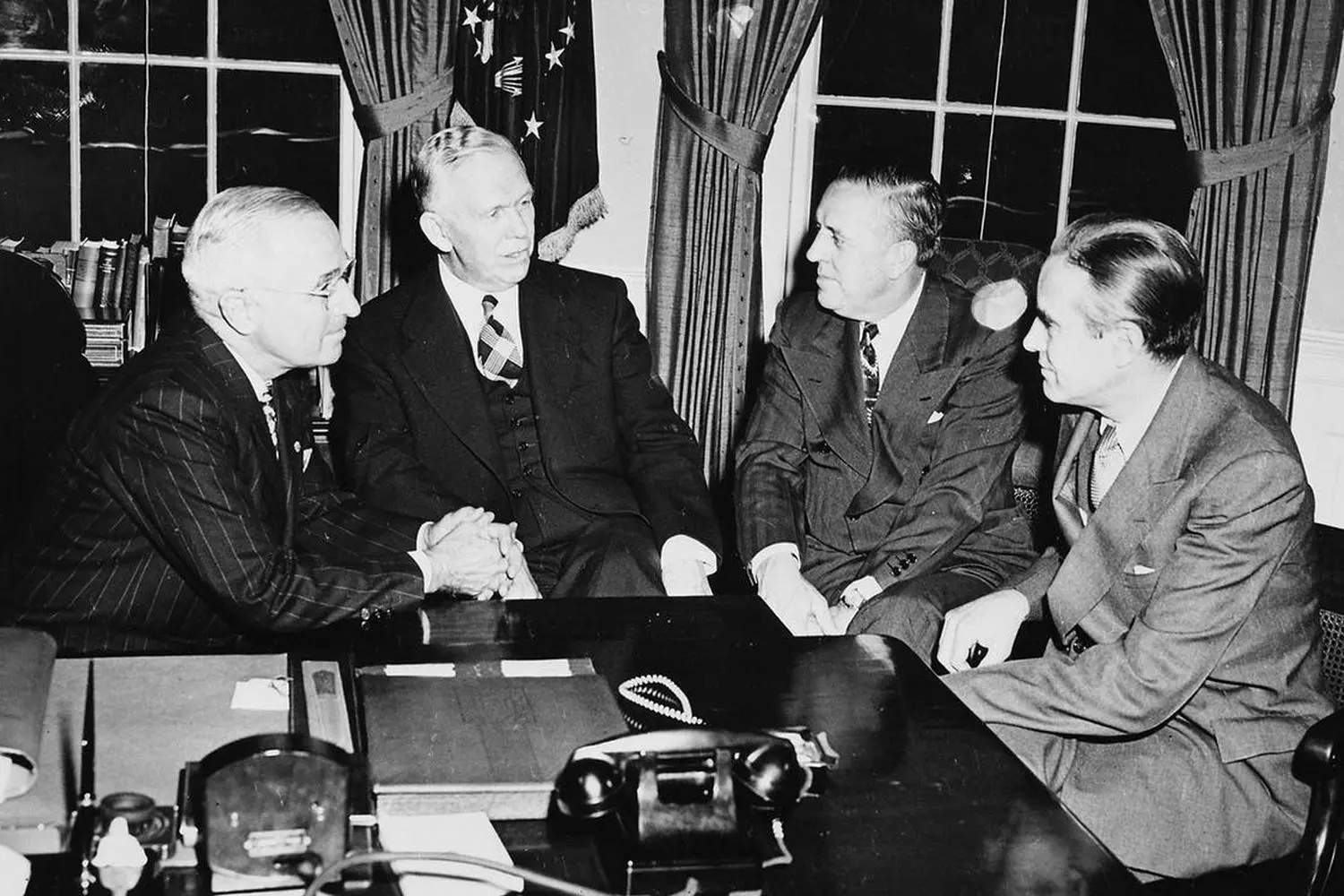
Red Ghosts on the Streets of Freedom: How America Hunted Witches
When people talk about the Cold War, they most often imagine the confrontation between the USA and the USSR — spies, missiles, the Cuban Missile Crisis. But one of the most alarming battles of that war unfolded within America itself. Not in the jungles of Vietnam, not in Berlin, but in university classrooms, film studios, editorial offices, and even schoolrooms. Its name — McCarthyism.
McCarthyism is not just a political strategy. It’s an atmosphere. It’s fear. It’s mass paranoia, where anyone could be accused of sympathizing with communism — regardless of the facts. And it all started with one man — Senator Joseph McCarthy.
In the early 1950s, he claimed to have a list of communists working in the U.S. State Department. He never showed the list or provided any evidence, but a real witch hunt began. Accusations multiplied, Congressional hearings followed one after another, and society sank deeper into a climate of suspicion and denunciation.
"Communism is not a party. It is a conspiracy. A conspiracy against American freedom," said McCarthy — and millions believed him.
How did McCarthyism manifest?
- 01. Suspicion at the highest levels of government
Hundreds of government employees, including those from the Department of Defense, the State Department, and even librarians (!) were subjected to loyalty checks. The grounds? A subscription to a left-wing magazine, participation in a union, or even acquaintance with "suspicious" individuals. - 02. “Blacklists” in Hollywood
One of the first groups to come under fire were film industry workers — screenwriters, directors, actors. Many were placed on Hollywood’s blacklist — an unofficial roster of persona non grata. These people were simply no longer invited to work, contracts were terminated, and they were publicly shamed — all without trial or investigation.
For example, iconic screenwriter Dalton Trumbo, author of "Spartacus" and "Johnny Got His Gun", had to work under pseudonyms for years because he was on the blacklist. - 03. Universities and academics
Professors and students also came under the scrutiny of the House Un-American Activities Committee. Classes were canceled, grants revoked, careers destroyed. - 04. Informing and self-destruction
One of the darkest aspects of McCarthyism was that people began informing on each other to avoid suspicion themselves. Many confessed to communist sympathies they never had, just to get off easy. Some prominent figures publicly renounced friends, colleagues — even spouses.
Why was McCarthyism possible? In the context of the Cold War, the nuclear threat, and confrontation with the USSR, American society lived in constant anxiety. And fear became fertile ground for manipulation. McCarthy cleverly played on this — and became the embodiment of national paranoia.
Government agencies were afraid to appear weak, the media fanned the flames, and every citizen began to doubt themselves and those around them.
McCarthyism didn’t last long — but its consequences lingered for decades.
In 1954, after a failed attempt to target the U.S. Army, Senator McCarthy lost support. He was publicly condemned by the Senate, the media stopped defending him, and the public — stopped fearing him. McCarthy lived out his life in isolation and near-obscurity. But the wounds inflicted by his politics did not heal quickly. Careers were destroyed, public trust undermined, freedom of speech — called into question.
Why is this important today? Because fear is a powerful weapon — especially when wielded by politicians. McCarthyism shows how quickly democracy can slip into persecution, how easily freedom becomes a slogan, and suspicion — a sentence. And although we live in a different world today, the specter of McCarthyism still lingers: in forms of censorship, pressure, “cancel culture,” and media witch hunts.
McCarthyism is a reminder: true freedom is tested in moments of fear. And though America came through this darkness, the price it paid was high.
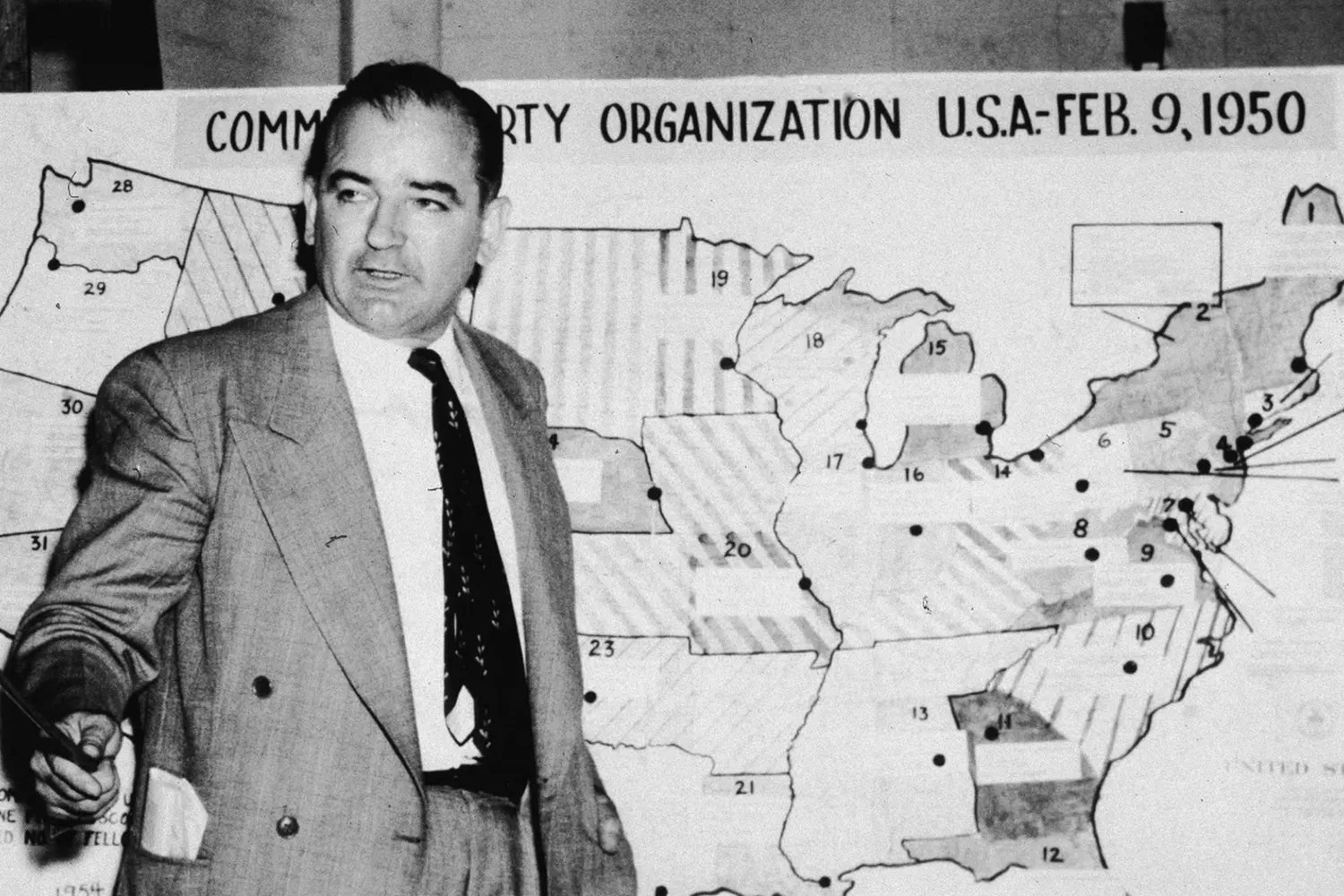
Living with the Shadow of the Blast: How America Learned to Fearlessly Face the End of the World
In 1949, when U.S. intelligence confirmed that the Soviet Union had successfully tested its own atomic bomb, the White House fell silent. The silence was not from surprise, but from the realization: the world had changed forever. The monopoly on destruction was over. A nuclear arms race had begun, and the stakes were painfully clear — survival.
- 01. Explosive Start: From Atomic to Hydrogen
In response to the Soviet nuclear breakthrough, the U.S. accelerated development of a new, even more powerful weapon — the hydrogen bomb, capable of destroying not just a city, but an entire region. While the atomic bomb claimed tens of thousands of lives, the hydrogen bomb could take hundreds of thousands — in a single flash.
In 1952, the U.S. conducted its first successful test. The Soviet Union was not far behind. Each new warhead was bigger and more destructive than the last. Both countries were literally competing in their ability to wipe out the planet.
Fun fact: by the early 1960s, the U.S. had enough nuclear arsenal to destroy all life on Earth several times over. - 02. Threat from the Sky: Defending Against the Impossible
The logic of nuclear deterrence demanded a paradox: one had to be prepared for a strike that was impossible to survive.
- Massive budgets were poured into anti-missile defense systems, but they offered little real protection — the missiles were simply too fast.
- Evacuation plans for cities were drawn up, but in classified briefings, even the generals admitted: “We won’t make it in time.”
- Hundreds of millions of dollars were spent on bomb shelters, both public and private. Many Americans began building shelters right in their backyards or basements.
Advertising posters from that era often showed smiling families behind airtight shelter doors with the slogan: “Safety is a way of life!”
- 03. Drills Under Desks: How Children Were Trained for the Apocalypse
One of the most absurd yet vivid symbols of the Cold War in the U.S. was the school drill known as Duck and Cover. Children were taught to drop to the floor, cover their heads with their hands, and hide under their desks when an alarm sounded.
Of course, in reality, a desk wouldn't even protect against the shockwave, but the government believed psychological preparedness was better than nothing.
These images — children with eyes shut tight and hands over their necks — may seem strange and naive today. But back then, they were part of everyday American life. - 04. Bomb in the Mind: How Nuclear Fear Entered the Culture
In the 1950s and 60s, the fear of nuclear war became part of the American psyche:
- People discussed in newspapers where best to hide during a blast;
- Movie theaters showed films about radiation-created mutants;
- Even architecture in some cities was adapted to withstand possible attacks.
Psychiatrists of the time began talking about a new type of anxiety disorder — the fear of total annihilation, uncontrollable and ever-present.
- 05. “Mutually Assured Destruction”
By the 1960s, both sides — the U.S. and the USSR — realized: if either side pressed the button first, everyone would die. Thus was born the concept of mutually assured destruction. Paradoxically, this ensured a fragile peace — no one dared to start.
The American Dream Underground: How Bunkers Became Part of Life
In the midst of the nuclear arms race and growing paranoia, a truly unique phenomenon emerged: private backyard bomb shelters. Fear of the apocalypse gave rise to a survivalist culture in which ordinary Americans began turning their basements and backyards into miniature fortresses — just in case the “red button” was ever pressed. Who built these bunkers?
- Homemakers, engineers, salesmen, teachers — it didn’t matter who you were, the idea that you could survive a nuclear war in comfort was captivating.
- Some hired professional contractors, others built with their own hands — using concrete, steel, old tanks, and even school buses buried underground.
The bunkers varied greatly:
- Simple ones — with a couple of sleeping spots, a radio, and canned food supplies.
- Luxurious by the standards of the time — with autonomous ventilation, libraries, children’s games, and even a bar.
- Some owners held “nuclear drill” rehearsals with their families: who could get inside the fastest.
Fun fact: As of 1961, nearly 200,000 American families had built or begun building private bomb shelters. School textbooks of the time included instructions on “How to dig a bunker in your backyard.” Yes, that was normal.
Bunkers became a symbol of the era — of both fear and belief in individual salvation. It was a time when Americans truly believed: if the government won’t save you, you must be ready to save yourself. It was during this period that the American preppers movement — people preparing for the end of the world — took shape. Their legacy lives on to this day.
Today the world is once again experiencing a period of geopolitical instability. And while the level of threats has changed, the logic of fear, the arms race, and the idea of defending against the impossible — have not gone away.
The nuclear arms race taught America how to live under the shadow of the bomb — and not lose its mind. It changed the perception of war, the future, and responsibility. And even decades later, echoes of these anxieties can still be heard — in politics, cinema, culture, and the most ordinary conversations about peace.
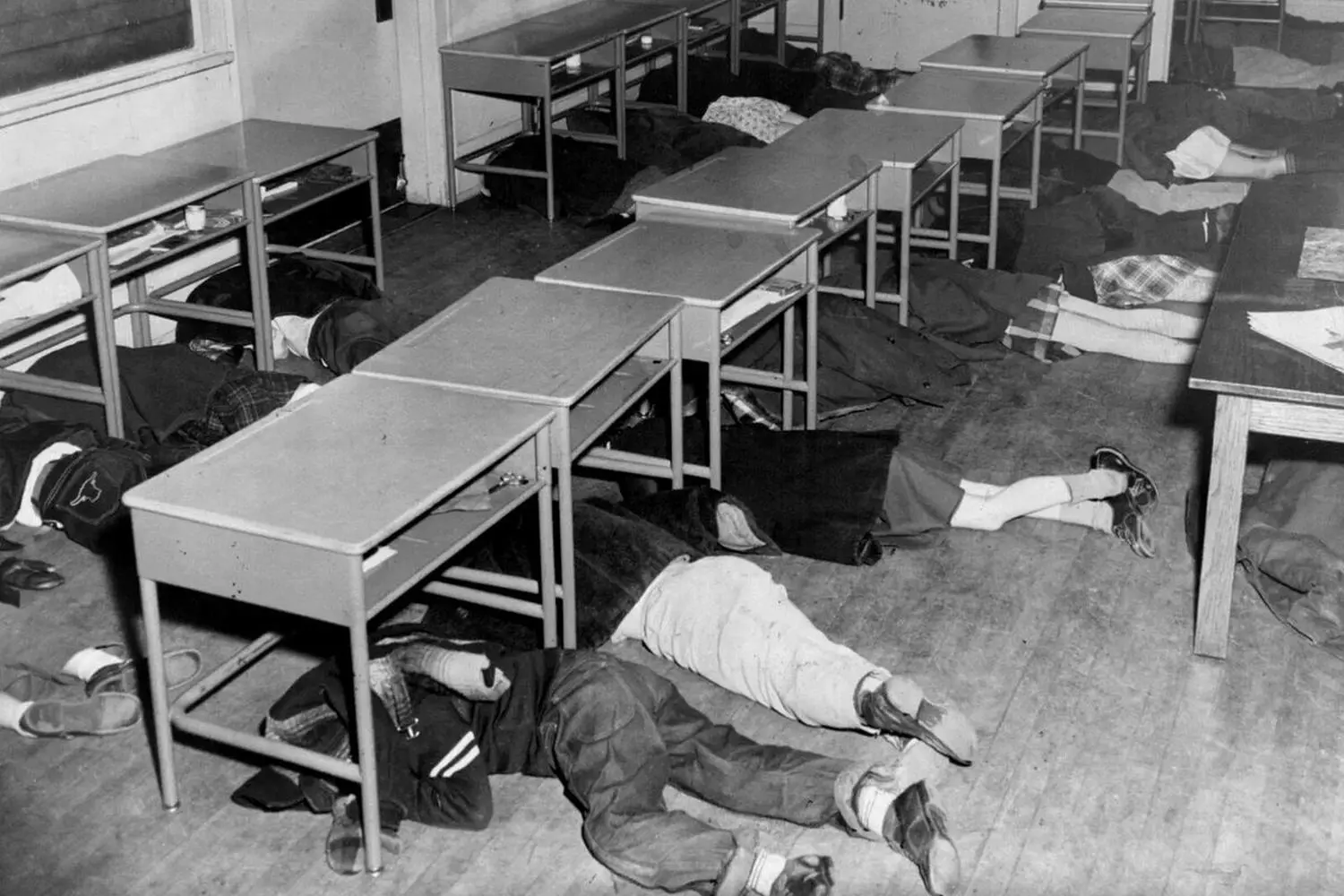
Battle for Minds: How the Cold War Turned Art into a Weapon
Before bombs started falling from the sky, while generals were still discussing nuclear strike scenarios, the war was already underway — on movie screens, on the radio, and in the pages of comic books. The Cold War sparked not only an arms race but a race for meaning. The U.S. fought not only for territories and alliances — it fought for minds, and art became its main ally.
- 01. Cinema: From Fear to Irony
American cinema became a true voice of the era. Through the screen, images of enemies and heroes were formed, the values of freedom and democracy were promoted, but fears, doubts, irony, and even protest were also expressed. Notable examples:
- “Dr. Strangelove” (1964)
A black satire by Stanley Kubrick on nuclear war. In the film, generals and politicians lead the world toward catastrophe with frightening naïveté. The film became a true classic and a manifesto of anti-militarism. - “The Red Menace” (1949)
One of the first openly anti-communist films, created with support from the FBI. In it, Soviet intelligence agents infiltrate American life, undermining the foundations of society. - “Requiem for the American Dream” (2015)
Although this film came out in the post-Soviet era, it deeply reflects on the consequences of ideological conflict and inequality rooted in that time.
Back then, cinema didn’t just entertain — it shaped the worldview. Each new generation looked to the screen for answers: who are we, where is the good, and should we fear our neighbor?
- 02. Music as Protest: From Bob Dylan to Jimi Hendrix
The Cold War gave rise to an entire wave of musical resistance. This became especially prominent in the 1960s, when American youth began to question government policies — including U.S. involvement in Vietnam, a direct result of Cold War containment logic. Here’s who played back then:
- Bob Dylan
His song “Blowin’ in the Wind” became an anthem for an entire generation asking uncomfortable questions: “How many years must a man exist before he is allowed to be free?” - Joan Baez, Pete Seeger, Country Joe & The Fish
Performed anti-war ballads, often openly accusing politicians of hypocrisy. - Jimi Hendrix
His electric guitar rendition of the U.S. national anthem at Woodstock (1969) became a powerful symbol — both of protest and respect.
Music during this period was more than just art — it was the voice of the streets, the will of the crowd bursting into the airwaves.
- 03. Comics: Heroes Guarding Ideology
During the Cold War, American comics became a tool of national identity and a moral compass.
- Superman
An alien who became a symbol of everything American. He fought injustice, saved the world, and of course, opposed the communist threat. In some issues, he directly battled characters representing the USSR. - Captain America
Created during World War II, but his star-spangled shield continued to deflect ideological blows through the 1950s and 60s. He embodied the dream of the ideal patriot. - X-Men
The series began in 1963, and although not directly, it addressed themes of intolerance, fear of dissent, and suppression of minorities — all echoes of the Cold War.
Interestingly, comics reflected both the fears and hopes of Americans. They were not just visual fast food, but a mirror of the era.
All of this — cinema, music, literature, theater, comics — became part of America's soft power. Through art, the U.S. led an ideological expansion, fought for influence, inspired allies, and even criticized itself. The Cold War was not just a battle of armies and missiles. It was a struggle for meaning, for the right to be heard, for truth — and in that struggle, art proved to be no less powerful than the nuclear arsenal.
Today, as information wars once again come to the forefront, the lessons of the cultural Cold War feel especially relevant. They remind us: freedom exists not only in words, but in songs, paintings, and jokes. And even in the darkest times, humanity continues to create, to sing, to draw, and to seek meaning. Because sometimes, one line from a song can be louder than an air raid siren.
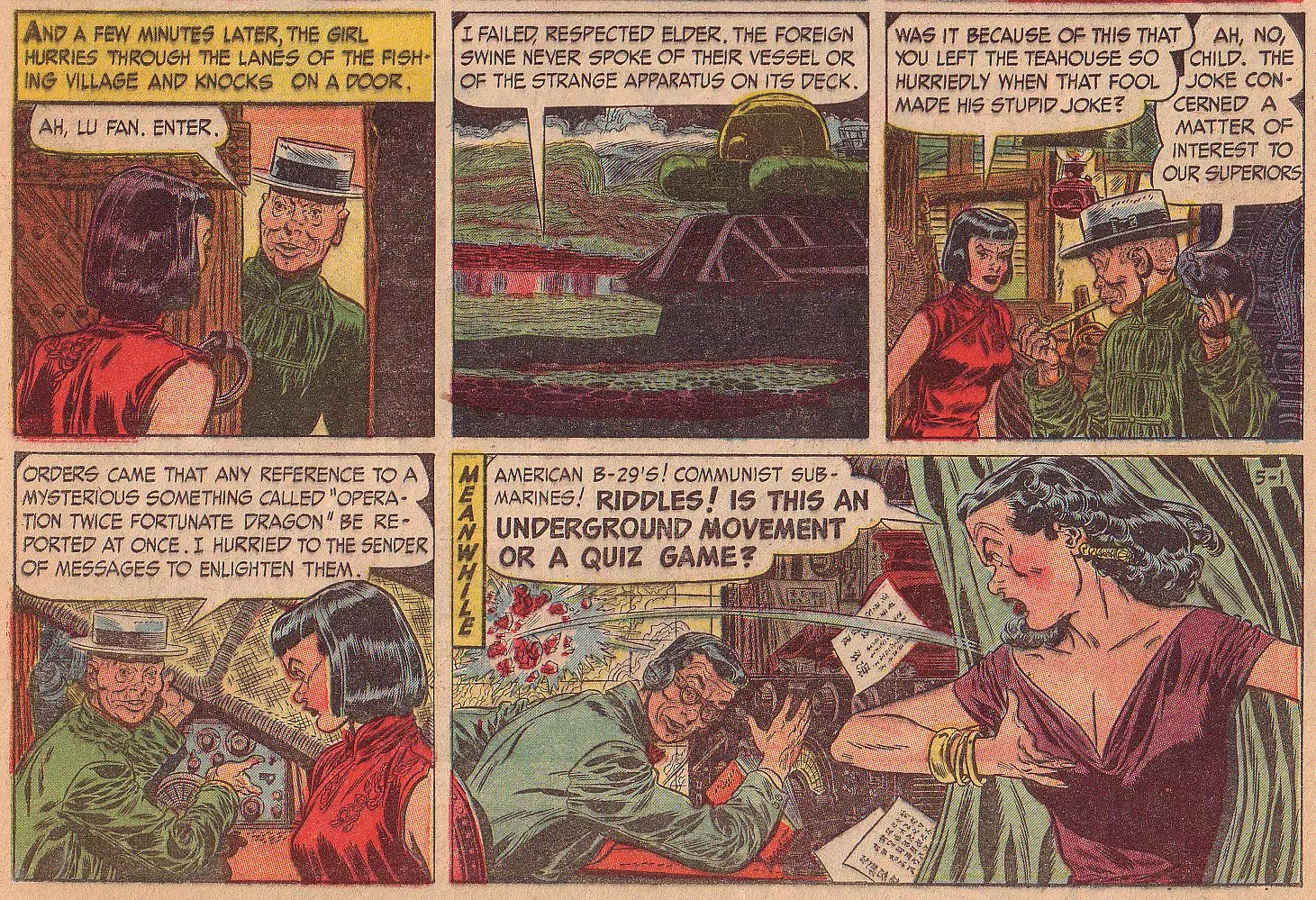
Battle for the Sky: How Space Became a Front in the Cold War
October 4, 1957, the world held its breath. From television screens and front-page headlines, one name echoed everywhere — “Sputnik-1”. It was a tiny metallic sphere with antennas, weighing just 83 kilograms, but it shook the planet more powerfully than the explosion of an atomic bomb. The USSR was the first to reach space — and, most upsetting for the Americans, it did so without warning. The space race had begun.
- 01. A Blow to the Ego
The Americans were in shock. Alarm spread through U.S. military circles: if the Soviets could launch a satellite into orbit, then they could launch a nuclear warhead along the same trajectory. Fear and envy quickly turned into motivation. And in 1958, by order of President Eisenhower, NASA was established — the National Aeronautics and Space Administration.
This wasn’t just an organization, but a scientific and political response — a symbol of America’s ambition and its future glory in space. - 02. Years of Intense Competition
The following decades were filled with bold experiments, accidents, discoveries, and triumphs. Every mission, every rocket launch carried not only scientific but propaganda value. Key milestones:
- 1957 — The USSR launches “Sputnik-2” with the dog Laika on board. The world realizes: the Russians are truly one step ahead.
- 1961 — Yuri Gagarin becomes the first human in space. Shock and awe. The world applauds, America frowns.
- 1961 (one month later) — The U.S. sends Alan Shepard into space — though only suborbitally, it marks the beginning of a counterattack.
- 1969 — A moment of triumph: Neil Armstrong takes the first step on the Moon. The phrase “That's one small step for man…” becomes a symbol of America's victory not just in the race — but in the ideological battle for humanity.
At first glance, one might ask: what was it all for? Billions of dollars, risks, tragedies (remember the loss of the Apollo 1 crew). But it all makes sense in the context of the Cold War:
- The Moon landing wasn’t just a scientific achievement, but a demonstration of U.S. technological superiority.
- Victory in space was a moral leap forward, especially after the USSR’s early successes.
- The world was watching and choosing: who was stronger, whose system was more effective — communism or capitalism?
Space became a screen onto which the ideals of both systems were projected. The war continued — not on the battlefield, but among the stars.
Interesting fact: When Neil Armstrong took his first steps on the Moon, over 600 million people watched the broadcast live around the world. It was not only a triumph for the U.S., but the most-watched television event of the 20th century.
Although tensions eased somewhat after the Moon landing, the space race continued:
- The launch of the Voyager probes with messages for extraterrestrial civilizations.
- The creation of space stations: Salyut, Skylab, and later — the ISS.
- The development of shuttles and spy satellites.
The Cold War in space was the most bloodless, yet most inspiring battle between the two superpowers. No guns were fired, no soldiers died on battlefields — but astronauts perished, rockets exploded, hopes were dashed. All to prove: we are the world’s leading power.
Today, as humanity once again dreams of Mars and private companies launch satellites, we still feel the echoes of that race. Because space is not only about science. It is about humanity’s thirst for dominance, recognition, and the search for meaning. And in that quest, the United States played one of the leading roles.
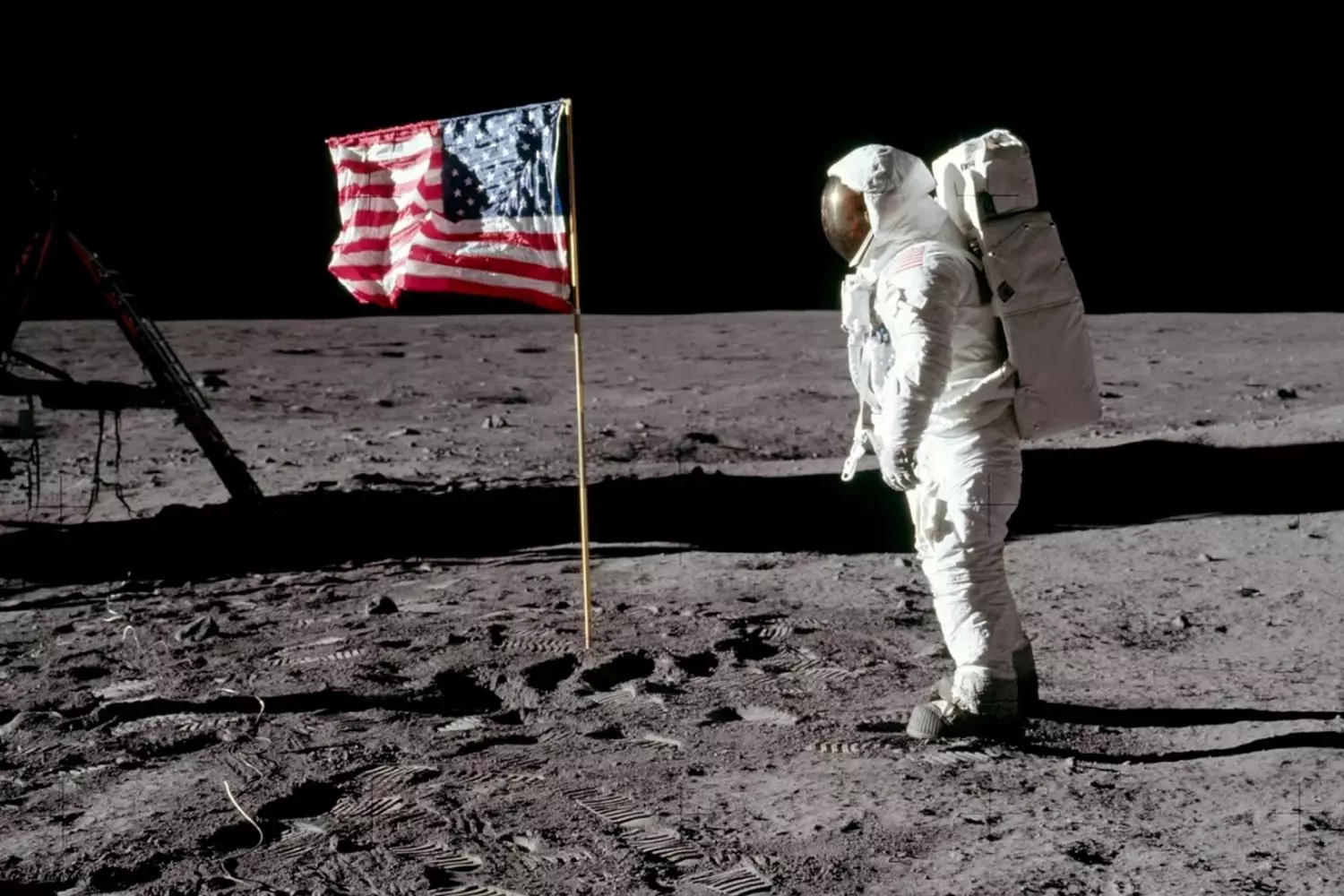
The Cuban Missile Crisis of 1962: The World on the Brink of Nuclear Apocalypse
October 1962 went down in history as one of the most tense and dangerous periods of the 20th century — a moment when the world literally stood on the brink of nuclear catastrophe. This dramatic episode became known as the Caribbean or Cuban Missile Crisis, marking the climax of the Cold War, when the world held its breath, waiting to see what would come next — nuclear war or a peaceful agreement.
- 01. The Background of the Crisis: Why the USSR Placed Missiles in Cuba
After the United States stationed nuclear-capable missiles in Turkey and Italy — just a few hundred kilometers from Soviet territory — the Kremlin decided to respond in kind. Cuba, recently turned into a socialist state under the leadership of Fidel Castro and located only 150 kilometers from the U.S. coast, became the perfect foothold for placing Soviet nuclear weapons.
This was not just a military move — it was a high-stakes strategic game that could shift the global balance of power. - 02. Discovery and the U.S. Reaction
On October 14, 1962, American intelligence captured satellite photographs revealing Soviet missile installations in Cuba. This was a shock for President John Kennedy and his administration — they were faced with the reality that missiles capable of delivering a devastating strike to American soil within minutes were now on their doorstep.
President Kennedy and his advisors spent several tense days weighing all options:
- A military operation to destroy the missile complexes in Cuba.
- Air strikes.
- A naval blockade of the island to prevent the delivery of additional weapons.
Ultimately, the strategy of a naval blockade was chosen, which Washington preferred to call a “quarantine” to avoid a formal declaration of war.
- 03. The 13 Days That Changed the World
From October 16 to 28, the world lived in a state of heightened alert. People everywhere prayed, hoped, and feared. Radio and television reported on the looming nuclear war, while governments concealed the true scale of the crisis.
During these days, secret negotiations took place between the USSR and the USA. Despite harsh statements from both sides, diplomacy prevailed. Soviet leader Nikita Khrushchev agreed to remove the missiles from Cuba in exchange for a promise from the U.S. not to invade the island.
Outcomes and Consequences of the Caribbean Crisis
- The USSR dismantled its missiles in Cuba.
- The United States secretly withdrew its missiles from Turkey to balance the situation.
- The first-ever “hotline” was established — a direct telephone link between the Kremlin and the White House to quickly resolve future crises.
This episode became the most dangerous moment of the Cold War and a lesson for all generations — showing how close the world can come to the abyss and how crucial the ability to negotiate even with the most irreconcilable opponents is.
The Caribbean Crisis is a story about how the balance of fear and reason kept humanity from tragedy. In tense moments, it is the capacity for dialogue and mutual understanding that becomes the key to saving the planet.
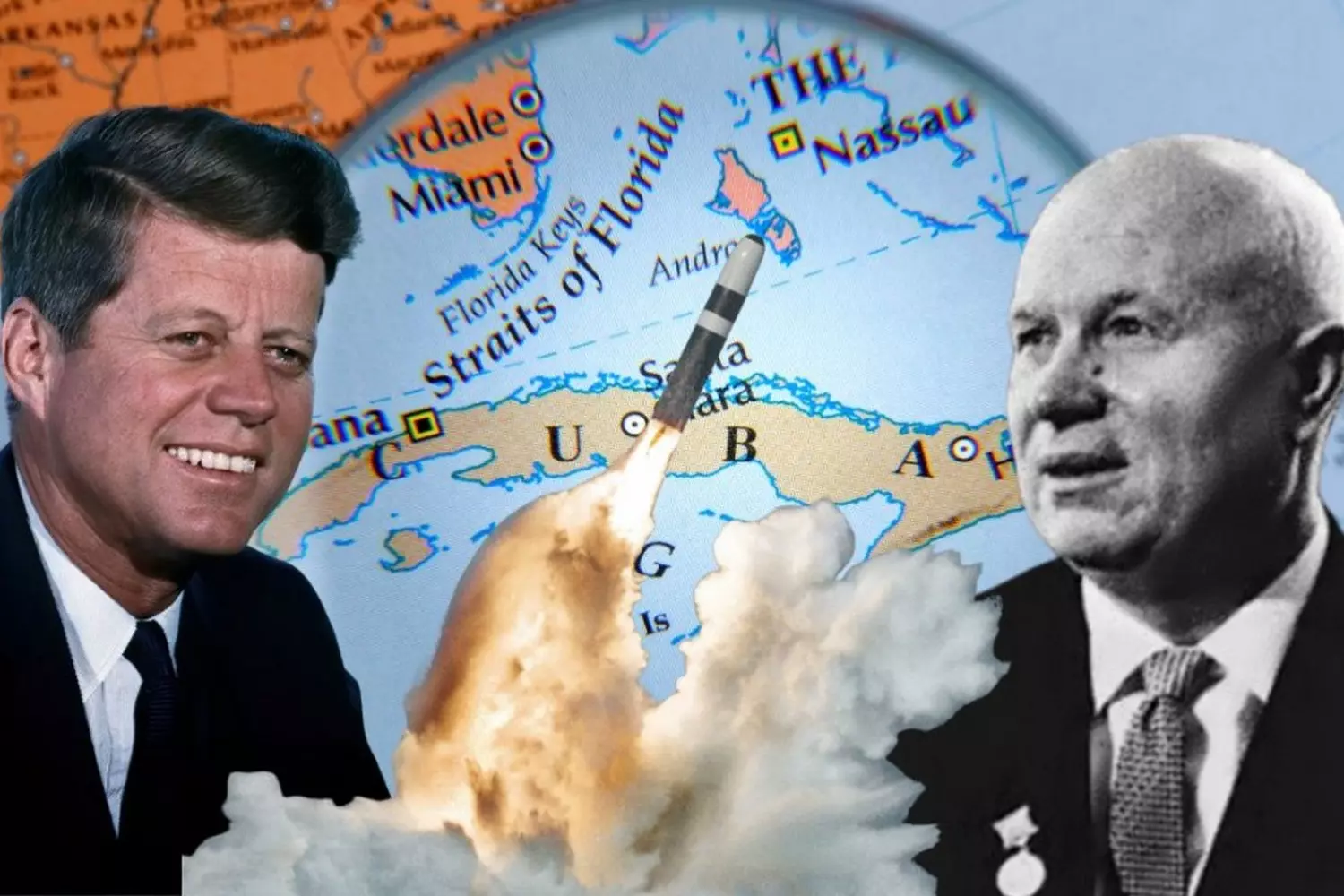
Vietnam: An Open Wound in American History and a Lesson of the Cold War
The Vietnam War was not just a military conflict but an entire era of pain, doubt, and reevaluation for the United States. For many Americans, it was the first true “television war,” where daily footage of battles, casualties, and protests entered their homes, making them question what the fight was really for.
After the end of World War II and the beginning of the Cold War, the world split into two ideological zones — capitalist and communist. The U.S. sought to prevent the “domino effect” — a chain reaction of Asian countries falling under communist regimes.
South Vietnam became a U.S. ally opposing the communist North, supported by the USSR and China. The American government saw its involvement as a strategic necessity aimed at stopping the spread of Soviet influence.
- 01. What was happening in Vietnam?
The U.S. began by providing economic and military aid to South Vietnam but soon had to send tens of thousands of soldiers on the ground. The war turned into a prolonged conflict using modern technologies:
- The use of helicopters and armored vehicles in the jungles.
- Chemical agents such as Agent Orange to destroy vegetation and enemies.
- A guerrilla war against a regular army, where the enemy hid among civilians.
- 02. The cost of the war: human and social losses
For the U.S., this war became the bloodiest since World War II:
- More than 58,000 American soldiers died.
- Hundreds of thousands were wounded and injured.
- Vietnamese casualties — millions dead and wounded among both military and civilians.
- 03. The war on American soil: protests and social divide
Returning home, soldiers faced not honor but misunderstanding and condemnation. Anti-war movements grew across the U.S.:
- Mass protests on streets, in universities, and cities.
- Songs and poems condemning the war and calling for peace.
- Conflicts between generations and a societal rift.
For many Americans, Vietnam became a painful lesson that ideology and politics are complex matters, and a simple desire to stop communism does not justify human sacrifice. The war influenced U.S. foreign policy — military interventions became more cautious, and society grew more critical of authority.
Interesting fact: During the Vietnam War, the term “Doctor America” emerged — doctors treating wounded soldiers became true heroes but often suffered their own physical and psychological wounds that remained unnoticed for a long time.
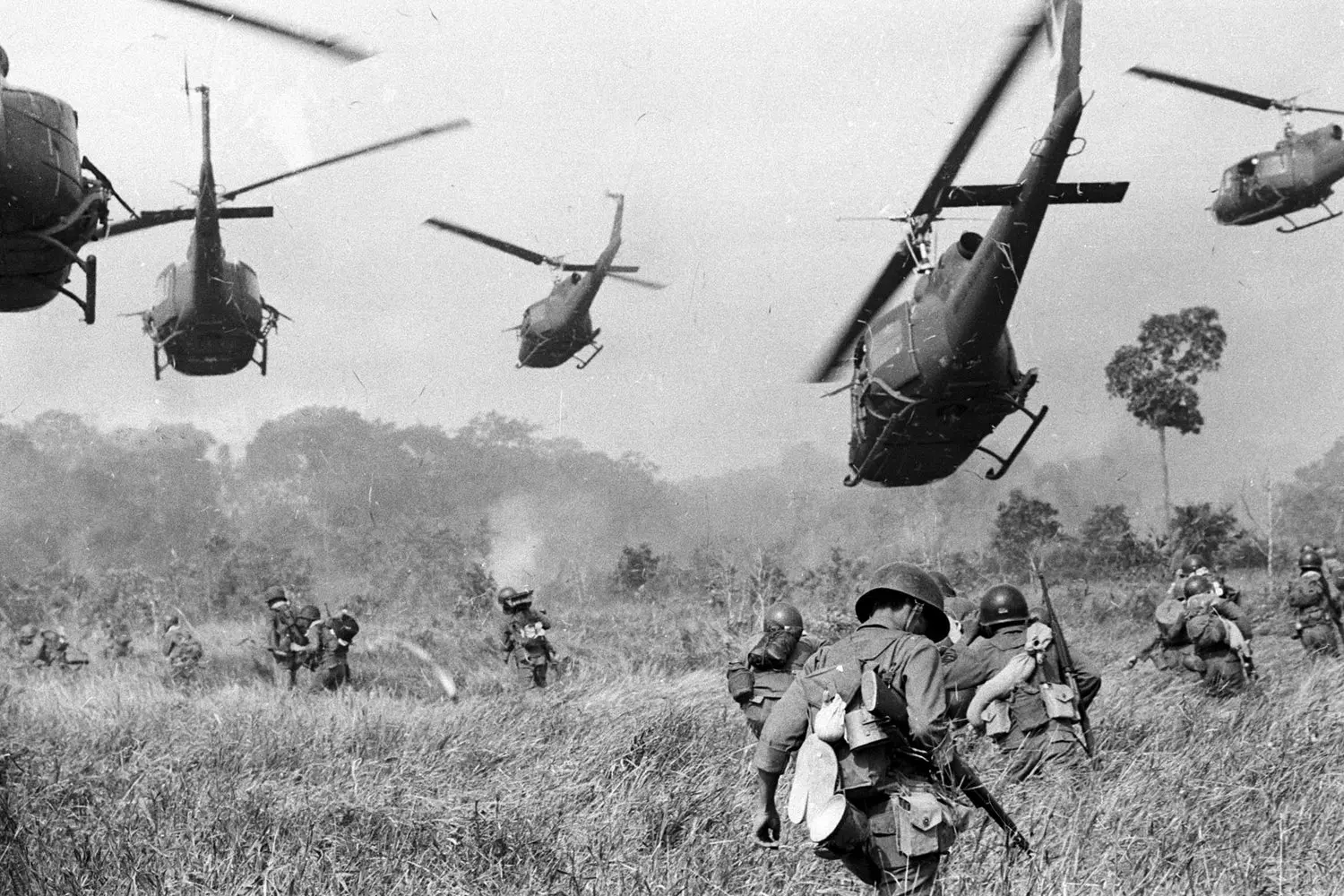
Détente and the End of the Cold War: How Two Giants Tried to Find Peace
By the early 1970s, the world was already quite tired of the constant fear of nuclear war and the tension between the USSR and the USA. After decades of mutual threats and the arms race, both sides began to realize that peace was a price too high to pay for endless confrontation. Thus, the policy of détente was born — an attempt to lower the temperature of the conflict and find common ground.
- 01. Détente — more than just a word, a diplomatic revolution
It was a time when the leaders of the two superpowers, for the first time in many years, engaged in serious dialogue and agreed on concrete steps to limit arms and improve relations. Détente was not a surrender or a weakening, but rather a smart maneuver aimed at preserving peace and the balance of power. - 02. SALT — when words turn into treaties
Negotiations on SALT (Strategic Arms Limitation Talks) became a real breakthrough.
- SALT I (1972)
This treaty limited the number of nuclear missiles and ballistic bombers. A verification mechanism was established so that both sides could check compliance with the agreements, which increased the level of trust. For the first time in the history of the Cold War, there was hope for control over the insane arms race. - SALT II (1979)
This treaty expanded the limits, including new types of missiles and systems. Unfortunately, due to worsening conditions (the Soviet invasion of Afghanistan and other events), the US Senate never ratified this treaty, although both sides tried to follow its spirit.
- 03. Nixon’s visit to Moscow: diplomacy changing the course of history
In May 1972, US President Richard Nixon made a historic visit to Moscow. It was the first official meeting in many years between the leaders of the two hostile powers on Soviet soil.
- Nixon and Leonid Brezhnev signed the Agreement on the Prevention of Nuclear War — a document obligating both countries to avoid conflicts that could lead to nuclear catastrophe.
- Agreements were also concluded on cooperation in trade, science, and culture.
This visit showed that even in the height of ideological struggle, common interests could be found and progress toward peace could begin. The American press called this event “a new era in international relations.”
- 04. Space — a new arena of friendship and rivalry
The space race became one of the symbols of the Cold War. But it was during the era of détente that one of the brightest examples of cooperation occurred — the 1975 Apollo-Soyuz mission.
- The American spacecraft Apollo and the Soviet Soyuz docked in orbit.
- Astronauts and cosmonauts shook hands and exchanged gifts, symbolizing hope for friendship and peace in the future.
This moment became a real sensation for both the scientific community and ordinary people, demonstrating that even the most powerful rivals could unite for a great cause.
Why was détente so important?
- It reduced the risk of nuclear apocalypse
The world now knew that countries had agreed on control and mutual responsibility. - It gave new momentum to dialogue
Meetings of leaders, joint projects, and exchanges contributed to better understanding. - It set an example for the whole world
Even in an era of ideological hostility, diplomacy and common sense could prevail.
Despite all the successes, détente proved fragile. By the early 1980s, the situation changed — Ronald Reagan came to power, proclaiming a tough policy against the Soviet Union. A new arms race, escalation in Afghanistan and other regions brought the world back to the brink of conflict.
Interesting fact: During Nixon’s visit to Moscow, the Soviet newspaper Pravda published a satirical comic where the American president was depicted as a hero of Soviet cartoons. This was an unexpected and almost friendly gesture that momentarily erased the boundaries between the two systems.
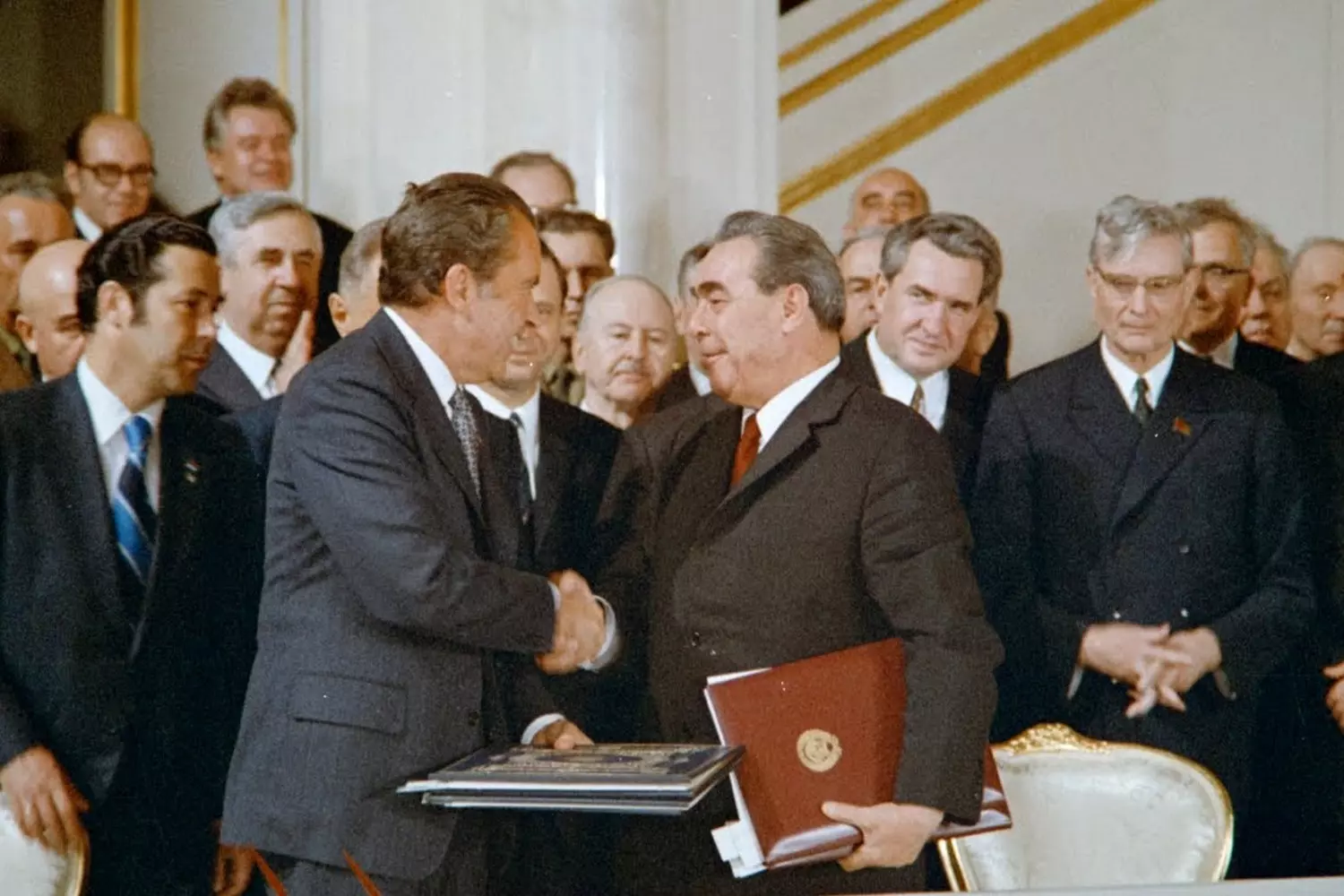
The End of an Era: How the Wall Fell and the Great System Collapsed
The Cold War — one of the most dramatic and tense periods of the 20th century — did not end suddenly. It was a slow but irreversible process that changed the world map and transformed the lives of millions. The finale of this era became the culmination of decades of political, economic, and social transformations.
- 01. The treaty that opened the door to change
In 1987, an event took place that many saw as the first bell signaling the end of the Cold War — the signing of the Intermediate-Range Nuclear Forces Treaty (INF) between the USA and the USSR. This treaty:
- Required the destruction of all ballistic and cruise missiles with ranges from 500 to 5,500 kilometers.
- Served as a symbol of trust and the readiness of both countries for real arms reduction.
For many, this was an unexpectedly bold step that showed — despite years of hostility — leaders could find common ground for the sake of peace.
- 02. The fall of the Berlin Wall: when not only bricks came down
On November 9, 1989, the Berlin Wall — a symbol of the division of Europe and the world into two camps — was effectively dismantled. This event was not the result of military victory but rather a wave of popular yearning for freedom and change.
- Thousands of East Germans finally gained the ability to freely cross the border into West Berlin.
- People on both sides cried and embraced, many feeling united for the first time in decades.
The Berlin Wall embodied not only geopolitical division but also human destinies — families separated by borders, dreams of freedom, and fear of the unknown. Its fall became a symbol of the collapse of an entire era.
- 03. The fallen giant: the dissolution of the Soviet Union
1991 became the final chord of the Cold War. The Soviet Union — a state that seemed unshakable after World War II — broke up into 15 independent republics.
- An economic crisis, political reforms by Mikhail Gorbachev, and national movements within the republics accelerated the process.
- On December 26, 1991, the Soviet Union officially ceased to exist.
This event not only changed the geopolitical map but also delivered an emotional blow to millions of Soviet citizens accustomed to a certain way of life and ideals.
After the collapse of the USSR, America remained the world’s sole superpower. This meant:
- An increase in its influence in politics, economy, and culture.
- New challenges — the need to adapt to a new world order without a serious competitor.
- The beginning of a unipolar era, where the USA played the role of the main arbiter of international conflicts.
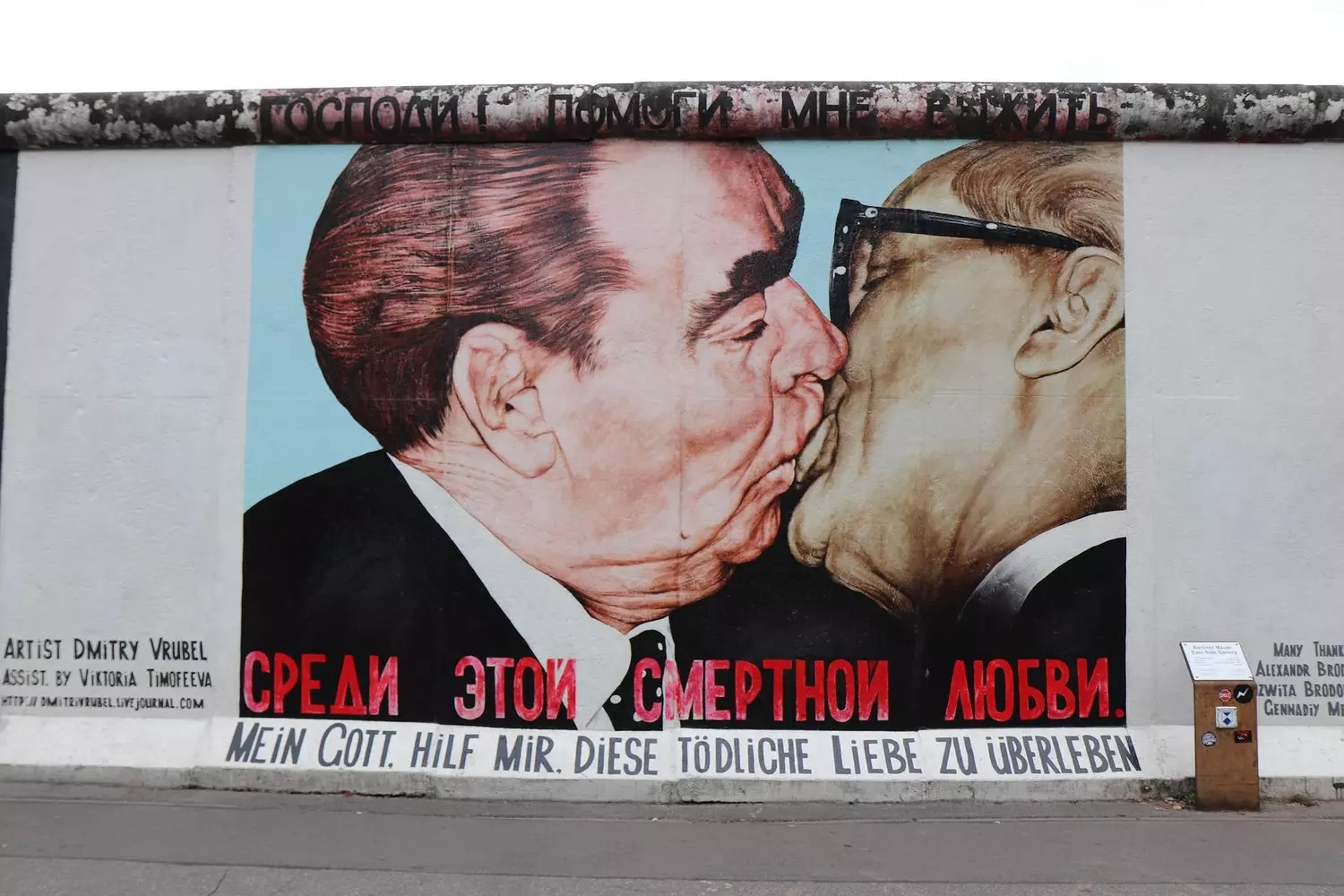
The Legacy of the Cold War: How an Era of Confrontation Shaped Modern America
The Cold War is not only the story of a global confrontation between two superpowers. It is a period that left an indelible mark on the political, technological, and cultural life of the United States. Even decades after the conflict ended, the consequences of that era continue to influence the daily reality of Americans.
- 01. The strengthening of the state’s role in everyday life
During the Cold War, the U.S. government significantly expanded its presence in the lives of its citizens. Not just as a regulator, but as an active participant and guarantor of national security. This manifested in:
- The continual development of intelligence and security services aimed at protecting against “internal enemies” and external threats.
- The implementation of civil defense programs, such as the construction of bomb shelters, regular drills, and informing the public about what to do in case of a crisis.
- The formation of a new political culture, where concepts of patriotism, loyalty, and civic duty gained special significance.
This strengthening of the state’s role became one of the factors that shaped the American political system and public mindset in the following decades.
- 02. The birth and development of key institutions — the legacy of the Cold War
Some organizations and programs created during this period still exist today, playing an important role in the life of the U.S. and the world.
- CIA (Central Intelligence Agency)
It was during the Cold War that the CIA became a powerful tool of intelligence and influence, capable of operating worldwide. - NASA
The National Aeronautics and Space Administration. Founded in 1958 in response to the launch of Sputnik, NASA became a symbol of American technological breakthrough. - DARPA
The Defense Advanced Research Projects Agency. DARPA funded developments that later evolved into modern communications and information technologies.
These institutions continue to be at the forefront of innovation and security.
- 03. America as a global leader of democracy
During the Cold War, the U.S. positioned itself not just as a powerful state, but as an ideological beacon of democracy and freedom. This image proved extremely influential:
- Policies supporting democratic movements and governments worldwide were formed.
- Propaganda of free values was actively promoted in cultural and educational spheres.
- The American Dream became an inspiration for millions — a symbol of personal success and freedom of choice.
This image still plays a key role in U.S. international politics and in the nation’s self-identity.
Many iconic inventions we use today largely owe their origins to defense research during the Cold War:
- The Internet was originally conceived as a communication system resilient to nuclear strikes to ensure connectivity during crises.
- GPS (Global Positioning System) was developed by the U.S. Department of Defense for precise missile guidance and military navigation.
- Many other technologies — from microprocessors to satellite surveillance systems — were born or received a powerful boost during these years.
Thus, despite the harsh confrontation and fears of the time, the Cold War became a powerful catalyst for technological progress.
The legacy of the Cold War lives on in every aspect of modern America — in the structure of power, in technology, and in cultural self-awareness. It was a time when challenges spawned innovations, and fear fostered unity and resolve.
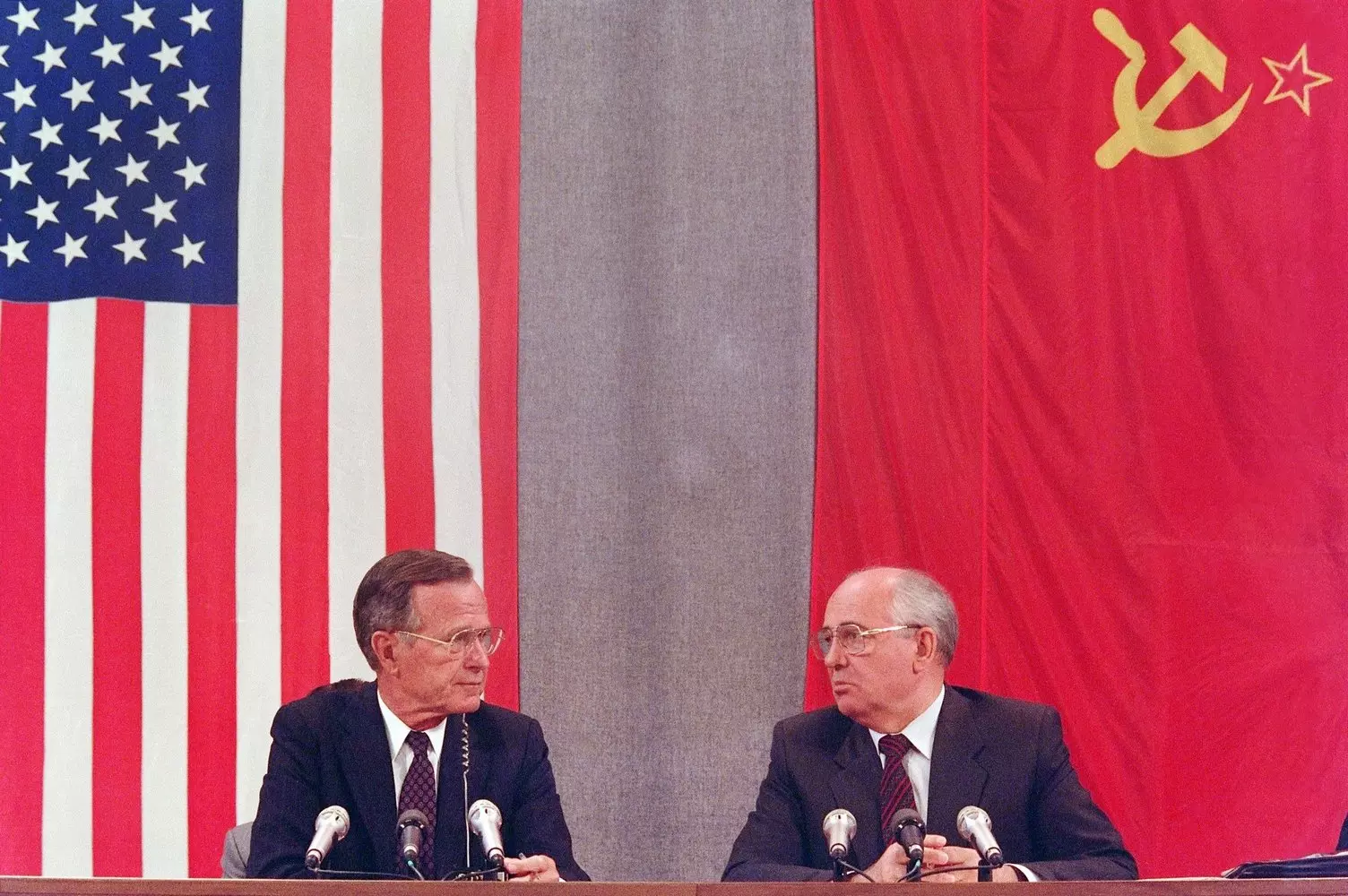
Little-Known Facts About the Cold War in the USA
The Cold War was not just a confrontation between the USA and the USSR — it permeated all spheres of American life: from politics and espionage to pop culture and everyday life. Here are some surprising facts that reveal this era from an unexpected perspective.
- 01. CIA and psychedelics: secret LSD experiments
As part of the MK-Ultra project, the CIA tested psychotropic substances on people, trying to create the “perfect spy” or a truth serum. Thousands of Americans, including ordinary citizens and agency employees, became victims of these experiments. - 02. Underground bunkers for Congress
In case of a nuclear war, American politicians were to take shelter in a secret bunker called “Greenbrier” in West Virginia. The facility was disguised as a resort, and its existence was declassified only in 1992. - 03. Coca-Cola vs. Communism
In the 1980s, Coca-Cola aired an ad where a teenager gives a can of cola to a Soviet soldier — a symbol of “friendship across the Iron Curtain.” But in reality, American companies were actively used in propaganda: for example, “Bubble Gum Cards” told children about the “atrocities” of the USSR. - 04. CIA’s spy pigeon project
Agents tried using pigeons equipped with miniature cameras as spies. The birds were trained to fly over Soviet sites, but the project was shut down because pigeons often got lost or became prey to hawks. - 05. Fake cities to fool the USSR
To confuse Soviet spy satellites, the U.S. built mock military bases and even entire “ghost towns” with cardboard planes and painted roads. - 06. Presidents’ “nuclear” briefcases
The idea of the nuclear football appeared after the Cuban Missile Crisis. But few know that the first launch codes were “00000000” — they remained unchanged for years out of fear the president might forget a complicated combination. - 07. The Cold War in space: secret spy shuttle
The U.S. developed the space shuttle X-20 Dyna-Soar, which could bomb the USSR from orbit. Later, the secret X-37B shuttle appeared, which still carries out mysterious missions in orbit. - 08. CIA wanted to blow up the Moon
In the 1950s, project A119 planned a nuclear explosion on the Moon — to demonstrate U.S. military power. Scientists even calculated that the mushroom cloud would be visible from Earth. Fortunately, the idea was abandoned: the explosion could have provoked the USSR and terrified all humanity. - 09. Fake “aliens” for psychological warfare
As part of the “Blue Book” project, the U.S. Air Force studied UFOs, while the CIA simultaneously developed “Operation Blue Beam” — a plan to simulate an alien invasion. The goal: to cause mass panic in the USSR and discredit Soviet media if they reported “aliens.” - 10. Eavesdropping via a cat
In the 1960s, the CIA launched the “Acoustic Kitty” project. A microphone was implanted in the cat’s ear and a transmitter in its tail. The cat was planned to be sent to Soviet diplomats, but on its first mission, it... was hit by a car. - 11. American military trained dolphin commandos
The “Whale Patrol” (MK-Dolphin) program trained marine mammals to find submarines, mine ships, and even kill divers. Some dolphins “served” in Vietnam, and their training continued until the 1990s. - 12. Nuclear bombs… lost forever
From 1950 to 1980, the U.S. Air Force lost at least 11 nuclear bombs in accidents. One of them still lies somewhere off the coast of Georgia. The government claims the bombs are “inactive,” but the exact locations of some remain unknown. - 13. Flying aircraft carrier with nuclear drones
The “FICON” project turned the B-36 bomber into an “airborne aircraft carrier”: it carried a reconnaissance fighter that could detach near the USSR. Later came the D-21 drones — they were dropped from planes but most were lost over Siberia. - 14. Fake packages with “anti-communist” viruses
In the 1950s, the CIA sent letters to Soviet scientists containing anthrax spores (project “Penicillin”). The goal was to sabotage research. Later, this practice was abandoned to avoid provoking retaliatory measures. - 15. “Dead Hand” — automatic nuclear retaliation
The U.S. developed the “Operation Looking Glass” system: if all leaders died, a computer would automatically launch missiles. The USSR had a similar system called “Perimeter”. In fact, the world hung by a thread, close to accidental war.
The Cold War was an era of paranoia, brilliant inventions, and wild adventures. Many of these projects sound like science fiction, but they really existed — and some technologies are still in use today.
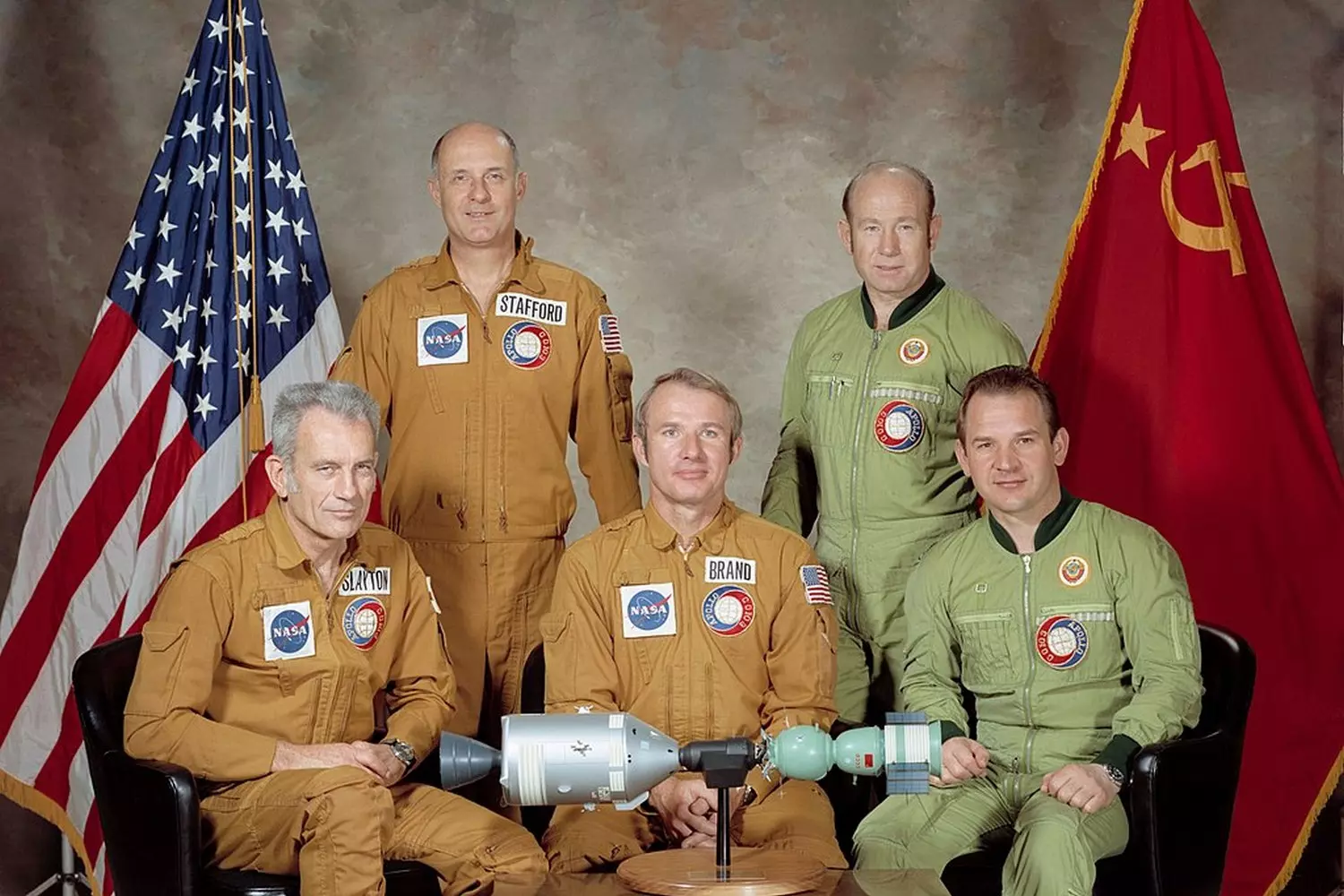
With American Butler — to the places where history comes alive
The Cold War is not just a historical episode. It is a mirror in which much of today’s reality can be seen. The USA experienced fear, paranoia, a technological leap, and a cultural revolution. This period shaped the country as it appeared at the dawn of the 21st century.
If you want to gain a deeper understanding of American society, its politics, fears, ideals, and achievements — the Cold War will be the key to many answers.
Want to see the places where Cold War history unfolded in the USA? We organize exclusive, custom tours for you around Washington, D.C., New York City, Los Angeles, and other key locations: museums, archives, memorials, military bases, and even former bunkers. Personalized approach, private guide, and a true immersion into the atmosphere of the era.
Book a historical tour with American Butler — feel history firsthand.


































